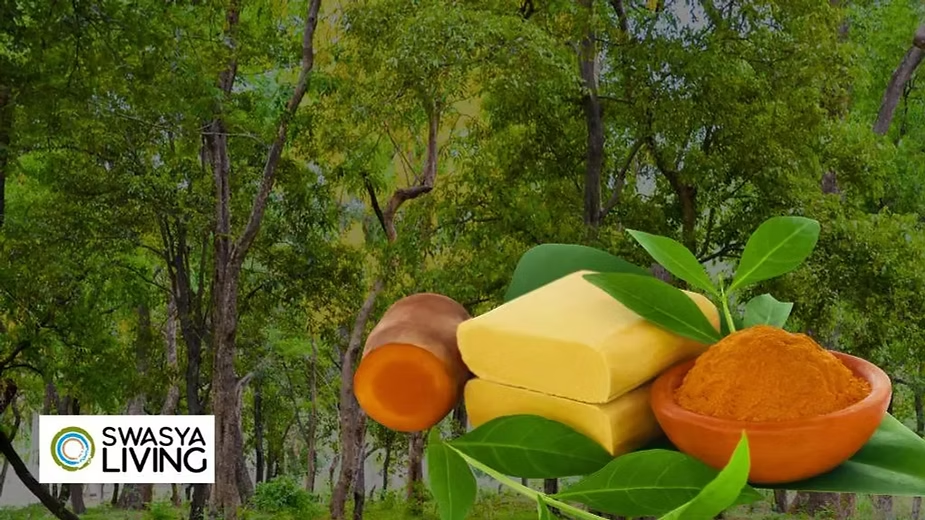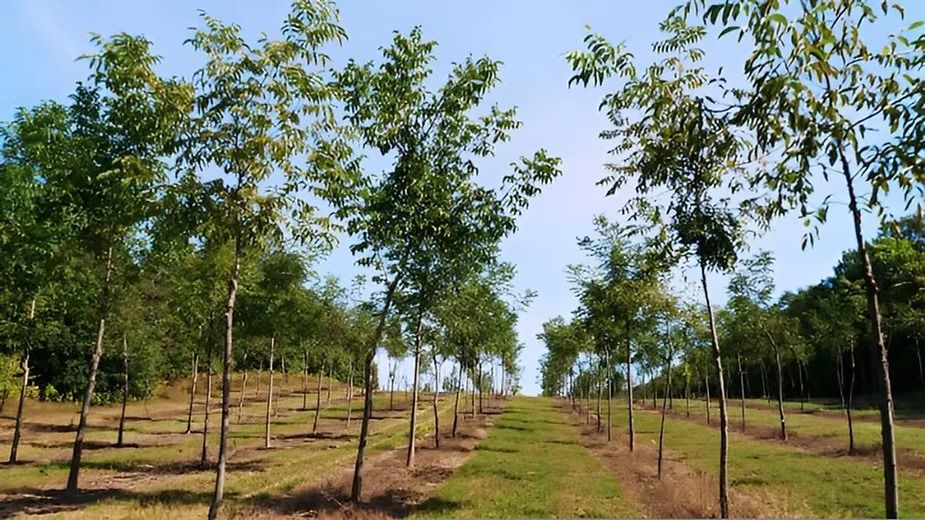How to Get a Licence for Sandalwood Plantation: A Complete Guide
Published on July 28, 2025

Sandalwood (Santalum album and Pterocarpus santalinus), renowned for its aromatic and medicinal properties, is a precious commodity in India. Historically under strict government control, sandalwood cultivation has faced various challenges, from illegal logging to stringent regulations. However, in recent years, the Indian government has relaxed some of these restrictions, encouraging private landowners to cultivate this valuable tree legally. This guide will walk you through how to get a licence for sandalwood plantation in india, the significance of sandalwood, and the steps involved in the application process.
How to Apply for a Licence for Sandalwood Plantation in India?
To apply for a sandalwood possession permit (license), applicants must follow specific steps to ensure compliance with forest regulations. Here's a detailed process on how to get a licence for sandalwood plantation and the necessary documentation involved:
Steps to Apply for Sandalwood Possession Permit:
Visit the Appropriate Office: The first step in obtaining a sandalwood possession permit is to approach the respective Deputy Conservator of Forests, District Forest Officer, or Divisional Forest Officer, who has jurisdiction over your area. The links to these authorities and their offices can typically be found on the official government websites.
Download and Fill the Application Form: Applicants are required to download the sandalwood possession permit application form from the official website of the Forest Department. After downloading, fill in all the necessary details accurately, ensuring no required information is left out. The form can be accessed through the link provided on the government portal.
Attach Required Documents: Make sure to attach all the necessary documents as mentioned in the “Required Documents” section of the official application guidelines. These usually include proof of ownership, identification documents, and other relevant certifications regarding the plantation or procurement of sandalwood.
Submit the Application: Once the application is completed and the documents are compiled, submit the form along with the required attachments to the respective officer in charge of your area. The submission can be done in person at the designated forest office.
Payment of Fees: The application fee, as required by the department, can be paid through challan, Demand Draft (DD), or any other advised payment mode. For more details, refer to the "Fees" section on the government website to ensure the correct amount is paid.
Verification of Documents: Upon submission, the forest department authorities will review the application, check the documents, and confirm the payment. If everything is in order, the application will be accepted, and the applicant will be given a record number for future reference.
Record and Acknowledgment: The authority will enter the details into the manual or electronic records and provide a signed and sealed copy of the application as proof of submission. This document serves as a confirmation for the applicant and should be kept safe for future reference.
SMS Notifications: After the application is submitted, the applicant will receive updates via SMS regarding the status of their application. This will include notifications on the progress of document verification and approval.
Document Authentication: The authorities will carefully authenticate the documents submitted. They will also evaluate the applicant’s intention or bona fides regarding the need for sandalwood possession or plantation.
Issuance of License: Once the documents and intent are verified, the respective authority will approve the application. The applicant will be informed of the approval through an SMS or other applicable notification. The permit, once issued, will be sanctioned in triplicate and will bear the seal and signature of the issuing authority. The original copy will be handed over to the applicant, while the other copies will be retained as records in the forest office.
Timeline: The entire process of obtaining the sandalwood possession permit typically takes about three days or as per the timeline advised by the authorities.
Subsequent Procurements: If the licensee intends to acquire additional consignments of sandalwood in the future, they are required to inform the respective District Forest Officer or concerned authority in writing. The information should detail the source from which the licensee plans to obtain the additional sandalwood.
Required Documents for How to Get Licence for Sandalwood Plantation

When applying for a sandalwood possession permit or seeking a licence for a sandalwood plantation in india, it's important to gather all necessary documents. Here’s a detailed list of documents you’ll need to submit along with your application:
1. Application Form:
The most crucial step in how to get a licence for sandalwood plantation begins with the proper application form. This form can be downloaded from the official government website or obtained at the forest department office. Make sure all fields are filled in accurately.
2. Proof of Residence:
Applicants must provide residence proof, which can include:
Ration Card
Passport
Aadhaar Card
Driving Licence
These documents confirm the applicant’s residential address and must be submitted alongside the application form.
3. Identity Proof:
Similar to residence proof, the applicant must provide identity verification with one of the following:
Ration Card
Passport
Aadhaar Card
Driving Licence
These identity documents ensure that the applicant is a legal resident and can apply for the sandalwood plantation licence.
4. Land Ownership Proof:
Applicants must submit legal documents proving ownership or lease of the land where they intend to plant or possess sandalwood. This is a crucial step in demonstrating that you have the right to plant or harvest sandalwood on the specified land.
5. Land Survey Report:
A report detailing the exact measurements and geographical location of the sandalwood plantation is required. This helps authorities verify the area where the plantation will be established.
6. Affidavit:
A notarized affidavit is necessary, declaring that the sandalwood plantation will comply with local laws and that the applicant will not participate in illegal sandalwood trading or harvesting. This legal document ensures that the applicant's intentions are clear and lawful.
7. Particulars of Storage/Sale Location:
Applicants must submit details of the locality where sandalwood is planned to be stored or sold. This includes specifics about the site and the intended purpose of the sandalwood once harvested.
8. Revenue Department NOC:
In some cases, a No Objection Certificate (NOC) from the Revenue Department may be required. This NOC ensures that there are no disputes or issues related to the land or its intended use.
9. Demand Draft for Fees:
Payment of the required fees through a demand draft or as per the prescribed mode must be submitted. The fees can vary depending on the state or region, so check with the local authorities for the exact amount.
10. Additional Documents for Origin or Procurement of Sandalwood:
If the applicant already possesses sandalwood or intends to procure it from another source, they must provide additional documentation verifying the origin of the sandalwood. This is particularly important for ensuring that the sandalwood has been obtained legally.
11. Notarized Self-Declaration Affidavit:
A self-declaration affidavit, notarized by the applicant, further reinforces their commitment to comply with all legal and environmental regulations related to sandalwood farming or possession.
12. Aadhaar Card:
The Aadhaar card is a mandatory identification document that needs to be submitted as part of the application process.
Additional Notes:
The list of documents may vary depending on the state. It's essential to check with local authorities to get the most accurate and up-to-date list of required documents.
In some cases, authorities may request additional documents or information during the application review process. Be prepared to provide these for faster processing.
By ensuring that all necessary documents are submitted in full, you increase your chances of successfully obtaining a sandalwood plantation licence. Following these guidelines for how to get a licence for sandalwood plantations will make the application process smoother and ensure that you comply with all legal requirements for sandalwood farming in Karnataka.
Once you’ve submitted these documents and the application, the Forest Department will process your request. Depending on the state, the approval process may take weeks to months.
Sandalwood Cultivation: Ensuring Sustainable Practices

Once you have obtained your sandalwood licence, it’s important to ensure that your plantation follows sustainable practices. Sandalwood is a slow-growing tree, and it typically takes 15-20 years for the tree to mature and be ready for harvest. To maintain sustainability:
Plant alongside other species: Sandalwood trees are parasitic and rely on nearby host plants for nutrients. Ensure a mix of species in your plantation to support sandalwood growth.
Monitor growth regularly: Keep track of the health of the trees, and ensure they are free from pests and diseases like sandalwood spike disease.
Harvest responsibly: When the trees are ready for harvest, make sure the process adheres to the regulations set by the government. You will need to inform the Forest Department and receive approval before harvesting.
Sustainable sandalwood farming not only ensures a steady income for the farmer but also helps in the conservation of this precious resource.
Conclusion
Sandalwood remains one of the most valuable trees in the world, but its cultivation requires legal compliance and sustainable practices. Now that restrictions have been relaxed, more private landowners are encouraged to grow sandalwood, contributing to both conservation and economic benefits. If you’re considering entering the sandalwood business, understanding how to get a licence for a sandalwood plantation is the first crucial step.
By following the proper procedures, gathering the necessary documents, and adhering to sustainable practices, you can join the ranks of responsible sandalwood cultivators, helping to protect this precious resource while also reaping the rewards of your hard work.
